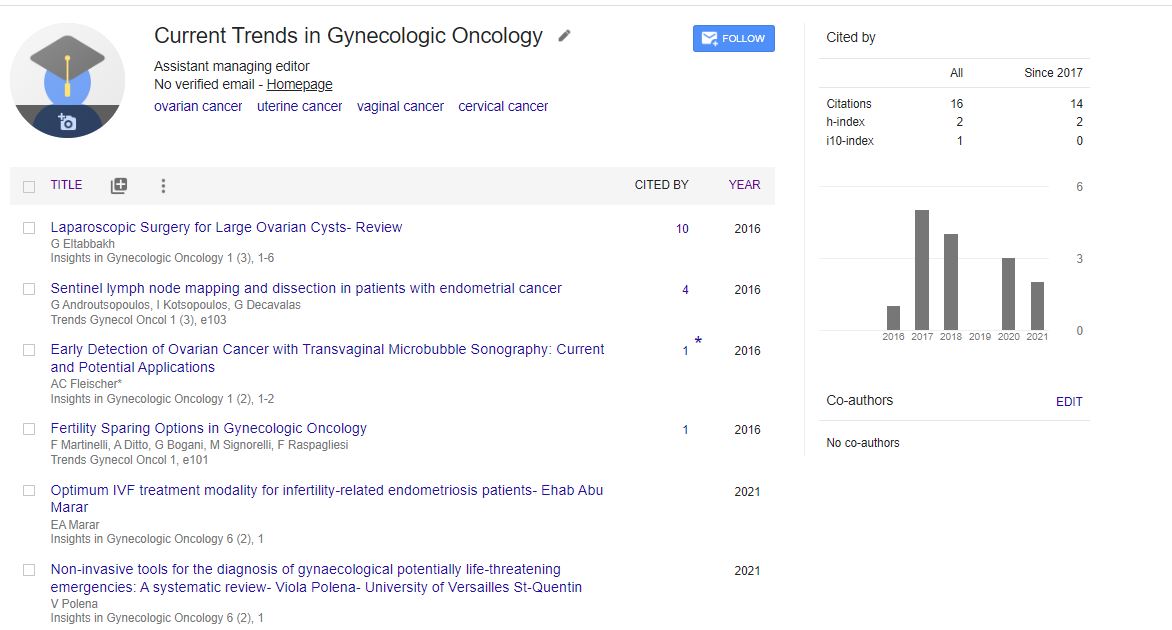Review Article
Measuring Intratumoral Metabolic Heterogeneity by Positron Emission Tomography in Cervical CancerâÃâ¬ÃâA Review
Yun Hsin Tang1,2, and Chyong Huey Lai1,2*1Department of Obstetrics and Gynecology, Chang Gung Memorial Hospital and Chang Gung University College of Medicine, Taoyuan, Taiwan
2Gynecologic Cancer Research Center, Chang Gung Memorial Hospital, Taoyuan,Taiwan
- *Corresponding Author:
- Chyong Huey Lai
MD, Department of Obstetrics and Gynecology
Chang Gung Memorial Hospital at Linkou
5 Fu-Shin Street, Kueishan
Taoyuan 333
Taiwan
Tel: 886-2-27135211
E-mail: sh46erry@ms6.hinet.net
Received date: December 01, 2016; Accepted date: January 06, 2017; Published date: January 12, 2017
Citation: Tang YH, Lai CH (2017) Measuring Intratumoral Metabolic Heterogeneity by Positron Emission Tomography in Cervical Cancer–A Review. Trends Gynecol Oncol 2: 110.
Copyright: © 2016 Tang YH, et al. This is an open-access article distributed under the terms of the Creative Commons Attribution License, which permits unrestricted use, distribution, and reproduction in any medium, provided the original author and source are credited.
Abstract
Measurement of intratumoral heterogeneity by 18F-fluorodeoxyglucose (18F-FDG) Positron Emission Tomography (PET) is a valuable modality, which showed correlation to response of treatment and prognosis in various malignancies. PET-based texture analysis for tumor heterogeneity is a potential predictive factor for cervical cancer and related to lymph node metastasis, tumor volume, response of treatment, and pelvic recurrence. Although seemed promising in utility in oncology, a plenty of methods have been used for analysis of heterogeneity which led to confusion of definitions and comparing results challenging. Further larger sized prospective studies are needed for standardized heterogeneity descriptors and clinical applications.

